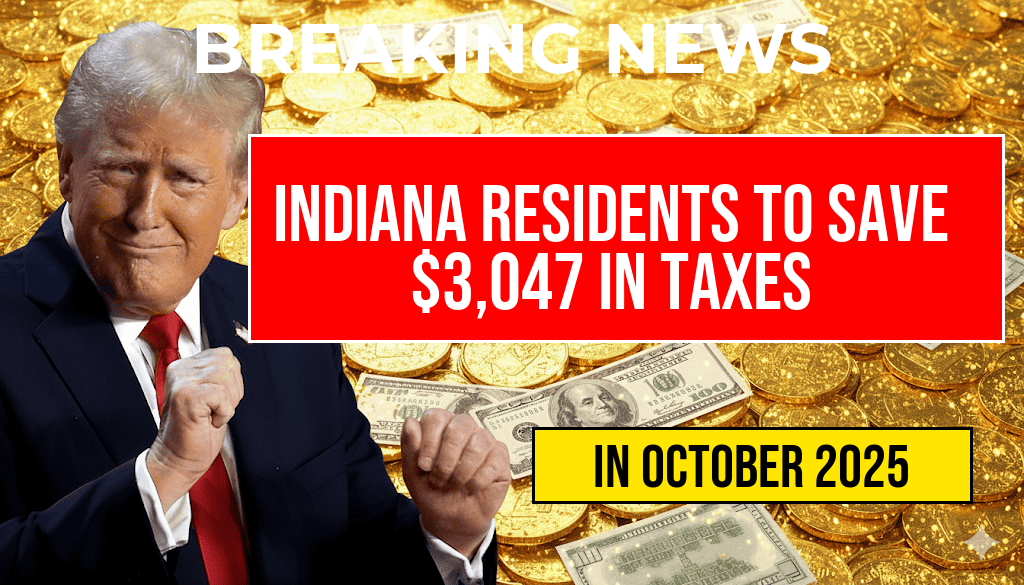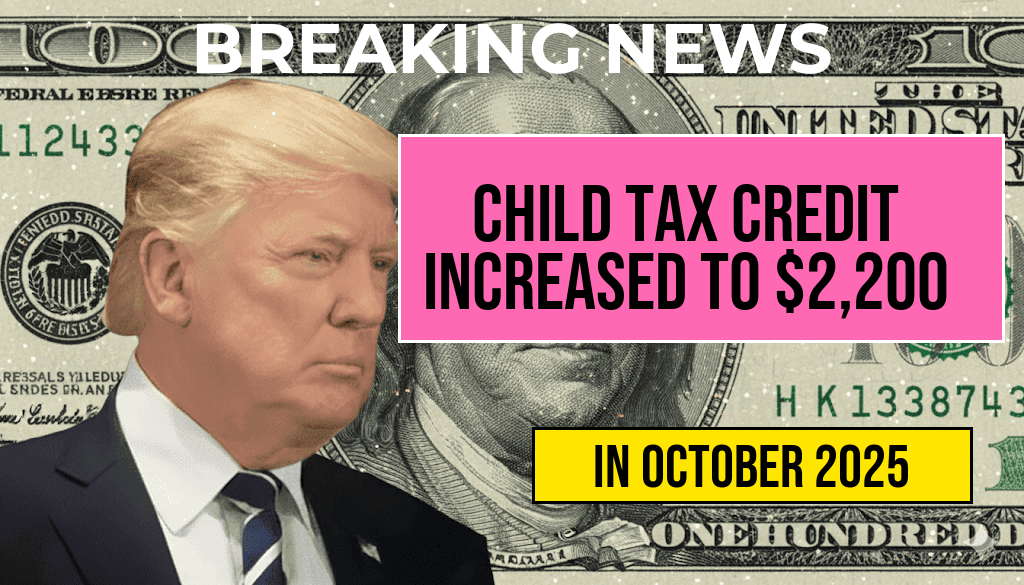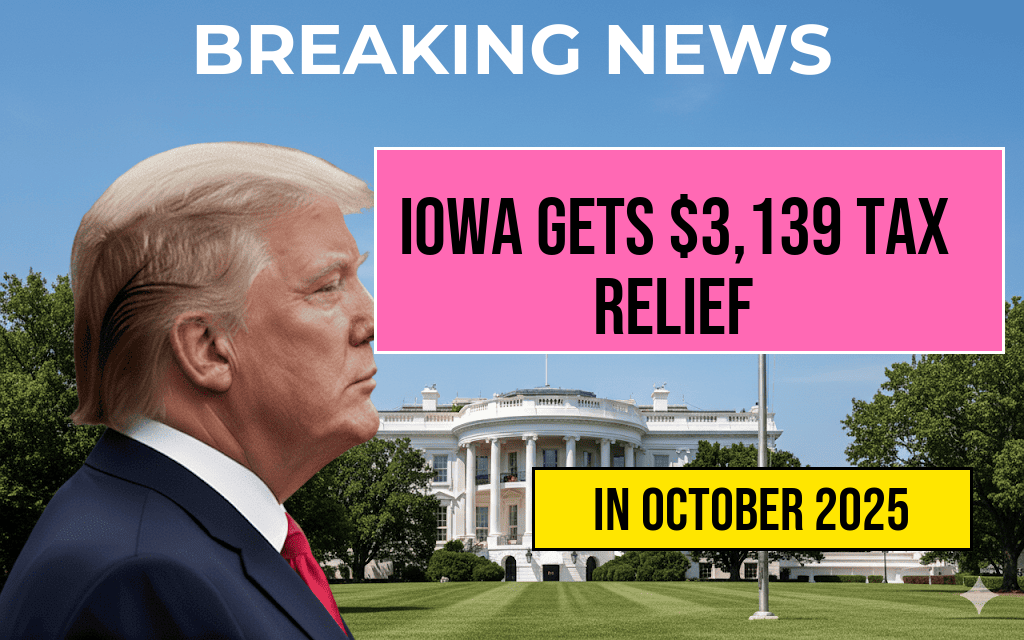Residents of Indiana are poised to see significant tax savings come 2026, with new legislation projected to reduce individual tax burdens by approximately $3,047 annually on average. The legislation, passed by the Indiana General Assembly earlier this year, introduces a series of tax reforms aimed at easing financial pressure on middle-income families and encouraging economic growth within the state. The reforms include adjustments to income tax brackets, increased deductions, and targeted credits, which collectively are expected to reshape Indiana’s tax landscape and boost disposable income for many residents. Experts suggest that these changes could place Indiana among the states with the most substantial tax relief, potentially influencing migration patterns and business investments over the coming years.
Details of the New Tax Legislation
Key Components Driving Savings
- Reduced Income Tax Rates: The legislation phases in lower income tax rates over the next few years, decreasing the top rate from 3.23% to 2.9% by 2026.
- Expanded Standard Deduction: The standard deduction for individual filers increases from $2,500 to $4,000, providing relief to a broader range of taxpayers.
- Enhanced Child and Family Credits: The bill introduces a $500 per child tax credit, aimed at supporting families with children and reducing overall tax liability.
- Increased Property Tax Relief: Local governments will receive additional funding to offset property tax hikes, ensuring homeowners continue to benefit from affordability initiatives.
Projected Impact on Taxpayers
| Income Level | Average Savings | Percentage Reduction |
|---|---|---|
| $50,000 | $3,047 | ~6.1% |
| $75,000 | $3,047 | ~4.1% |
| $100,000 | $3,047 | ~3.0% |
Economic and Social Implications
Potential Boost to Consumer Spending
By reducing the tax burden, Indiana residents are expected to have more disposable income, which could stimulate local economies. Retailers, service providers, and small businesses might see increased activity as households allocate funds toward goods and services they previously could not afford. Economic analysts from sources such as Wikipedia’s Indiana economy page suggest that sustained consumer spending could support job growth and attract new businesses to the state.
Migration and Business Investment
Lower taxes may make Indiana more attractive for both individuals and companies considering relocation or expansion. States with competitive tax policies often experience shifts in population dynamics, as documented in studies available on Forbes’ coverage of corporate migration trends. Indiana’s projected savings might influence some residents from neighboring states to consider moving, particularly if combined with other quality-of-life factors.
Fiscal Considerations and Budget Impacts
While the legislation aims to benefit residents, it also raises questions about the state’s fiscal health. Indiana officials anticipate that the combined effect of lowered tax rates and increased deductions will be offset by economic growth and broader tax bases. The state’s Department of Revenue estimates that the reforms will lead to a short-term revenue decline but expect a return to fiscal stability through increased economic activity and compliance. Budget analysts stress that ongoing monitoring will be essential to ensure that public services remain adequately funded without overreliance on growth-driven revenues.
Community Response and Political Perspectives
Public reactions to the legislation have been mixed. Supporters argue that the tax cuts will foster economic vitality and provide tangible relief to families struggling with rising costs. State lawmakers emphasizing fiscal conservatism highlight the importance of reducing government interference and trusting the free market to foster prosperity. Conversely, some critics warn that reduced revenue could constrain funding for education, healthcare, and infrastructure unless offset by economic expansion or federal aid. Local community leaders and advocacy groups continue to call for balanced policies that support both growth and essential public services.
Looking Ahead
As Indiana moves toward implementation of these reforms, residents and businesses alike will closely observe the unfolding effects in the coming years. The state’s approach reflects a broader national trend favoring targeted tax relief as a lever for economic development. The measure’s success will depend on how effectively the state balances fiscal responsibility with the goal of increasing household disposable income, ultimately shaping Indiana’s economic trajectory through the decade.
For further insights into Indiana’s economic policies and tax strategies, readers can explore resources provided by the Tax Foundation and the Indiana Department of Revenue’s official website.
Frequently Asked Questions
What is the main benefit of the new legislation for Indiana residents in 2026?
The new legislation is expected to help Indiana residents save approximately $3,047 in taxes in 2026, providing significant financial relief.
How will the legislation impact individual taxpayers in Indiana?
Individual taxpayers in Indiana will experience reductions in their tax liabilities, allowing them to keep more of their income and potentially improve their financial situation.
When will the tax savings benefits take effect for Indiana residents?
The tax savings are projected to begin in 2026, giving residents a clear timeline for when they can expect to see the financial benefits.
What changes are included in the new legislation that lead to these savings?
The legislation includes tax rate reductions and adjustments to deductions, which collectively contribute to the estimated $3,047 savings for residents.
Are there any eligibility requirements to benefit from the tax savings in 2026?
While specific eligibility details are not outlined, generally, Indiana residents who meet certain income and filing criteria should be able to take advantage of the increased tax benefits beginning in 2026.








